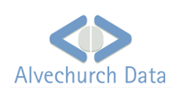Custom Toolbars in Access
Your Access database will look more impressive and be easier for
the users if you add some custom toolbars. One way of doing this is to
right-click on one of the existing toolbars and select
but it's safer to write some VBA code and let the application create
the toolbars for you. Microsoft Access gives you complete control of
these custom toolbars. You can create and destroy them and determine
whether or not they are visible to a particular user.
![Access form with custom toolbar [Access database form with custom toolbar]](../media/images/acctoolbar.gif)
This example shows a simple Customer form with its own
toolbar. This toolbar has the correct Windows icons
and a tooltip and this familiarity will give the user more
confidence in the quality of the database you've developed.
References for a custom toolbar
The code that creates this toolbar is in the Load event of
the Customer form. Before writing any code you must ensure that
you have a reference to the right library. The toolbar and its
buttons are instances of a
and
objects and these are not part of the core of Microsoft
Access. You must tell Access where it can find them.
Open a code editing window and select
from the
menu.
![Choosing a library from the Microsoft References dialog [Access References dialog]](../media/images/accreferences.gif)
The contents of this list will vary with the software
already installed on your PC. You need to scroll down to
the block of Microsoft software and tick the entry
for the Microsoft Office Object Library. This example
shows an entry for Access 97 in Office 8.0.
Note that this reference will have to be updated if you
try to run this code on a machine running a different
version of Microsoft Office. If you copy the database to
a machine running Office XP then you will be able to open
the database with Access XP but you will get an error
message saying that it cannot find the Office 8.0
library. The solution is to open the code window on the
new PC, clear the Office 8.0 tickbox and tick the box
for the version of Office running on that PC.
Create a custom toolbar
The first thing to do is to create the toolbar as a CommandBar object:
SetmyBar = CommandBars.Add(Name:="Customer", _
Position:=msoBarTop, _
Temporary:=True)
With myBar
.Controls.Add Type:=msoControlButton, Id:=539
.Controls.Add Type:=msoControlButton, Id:=4
.Controls.Add Type:=msoControlButton, Id:=644
.Visible = True
End With
The property is set True to define
this as a temporary toolbar. It will disappear when the database
is closed. This property defaults to False and any toolbar that you
create will persist and reappear the next time that you open the database.
If you do use a permanent toolbar then you must add error-handling code
to ensure that you do not try to create it a second time.
A command bar can hold several different types of control and the
parameter here declares that we are
adding three command buttons. The parameter
defines the icon that will appear on these buttons and the action that
the button will perform if we do not override it later. Set an Id of 1 if
you want a button with no icon.
The codes are not well-documented in the Access Help system. Follow this
link for a list of the most useful
ID codes
.
Define the buttons
Each button on the toolbar is a member of the Controls collection
of the CommandBar. This fragment of code defines the third button
on the toolbar:
With myBar.Controls(3)
.Style = msoButtonIconAndCaption
.Caption = "Delete Customer"
.OnAction = "=DeleteCustomer()"
.TooltipText = "Delete this customer"
End With
The property is set to show an
icon and some text. You can also choose
or
to show an icon or some text alone.
The property defines the
action that must be performed when this button is clicked. In
this example it calls a
method of the form.
Show and hide a toolbar
Use the and
properties of the CommandBar
object to control whether or not the user can see and operate
the buttons on the toolbar.
Removing a toolbar
This code in the form's
event removes the toolbar from the collection of
CommandBars. There is always the possibility that the
user might have closed the toolbar manually so we
have to work around this possible error.
On Error Resume Next
CommandBars("Customer").Delete
|


